If there is one trait that makes almost all the festivities in the world similar to each other, it’s increased food consumption. Probably because hunger was associated with everyday life back in the olden days, we still tend to celebrate by feasting. And eating. And just a tiny little bit more food after that. This tradition didn’t age well: in today’s culture of abundance, we usually don’t starve every day, yet still, driven by a subconscious habit, we celebrate special occasions with monumental calorie intake.
And, as far as Western foodways are concerned, the celebration is usually characterized by a quantitative shift to meat and fatty foods, which was associated with rewarding yourself for your everyday struggles. It has even been considered a rule, as famous anthropologist Claude Levi-Strauss described.
Polish Christmas Eve: feast, but not for the fish
That’s where the Polish Christmas Eve supper stands out. Although overeating is a common phenomenon, the choice of traditional food is healthy, perhaps even healthier than Poles’ everyday diets.
Why? Well, if meat consumption is to be taken as a marker here, then we should consider that an average Pole eats at least 60 kilograms of meat every year. This includes greasy chuck steaks, popular during summertime barbecues, and bacon, which is typically the food of choice at breakfast. This translates to 170 grams of meat per day included in a full meat-course dinner and something left for other meals (and let us assume that these per capita statistics are inclusive of toddlers and vegetarians).
Meanwhile, during Christmas Eve Supper, the same statistical Pole eats zero meat, making one of the most important festive events in the Polish calendar a hundred percent meat-free.
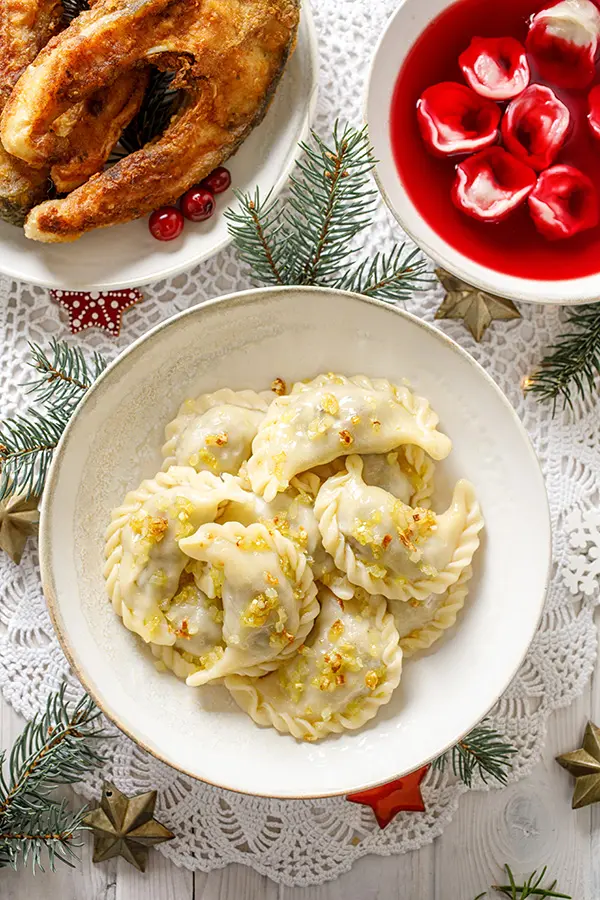

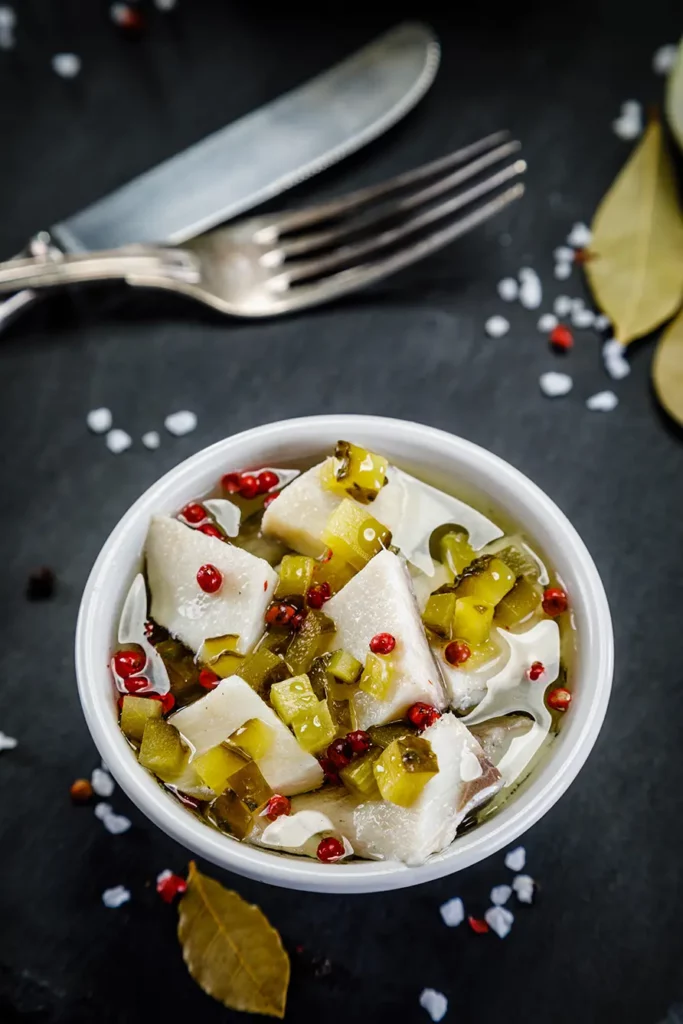
Not entirely vegetarian, mind you, as Polish Christmas Eve supper consists of an assortment of fish, and egg consumption goes sky high (though not even nearly as high as on Easter, of course.) Still, if the everyday Polish diet is all about meat, then the Christmas Eve Supper became an occasion to catch up with healthier food ingredients and remind their polish tastebuds of the flavor of vegetables.
What’s on the menu, then?
If invited to a Polish Christmas Eve supper, expect:
- marinated herring (in oil or cream, but also with thousands of regional and family variations);
- boiled carp in aspic;
- cabbage, as well as cabbage-and-mushroom stuffed dumplings;
- borsch with small cabbage and mushroom-stuffed tortellini-like dumplings (called uszka – ears);
- boiled vegetable salad;
- sweet pasta salad with poppy seeds (yup, you got it right);
- fish a’la Greek (don’t ask) – served in stewed root vegetable salad;
- dried fruit compote instead of sweet soft drinks;
- plus at least four more dishes, as, traditionally, there must be twelve of them.
As you can see, there’s a lot of fish. In fact, half-jokingly, one may expect that this one Christmas Eve Supper contributes largely to Polish fish consumption, as statistically, it amounts to just a quarter of that of meat. There are also lots (and lots) of vegetables, some of them recycled from the bullion base. And many dishes are boiled, with only some frying included.
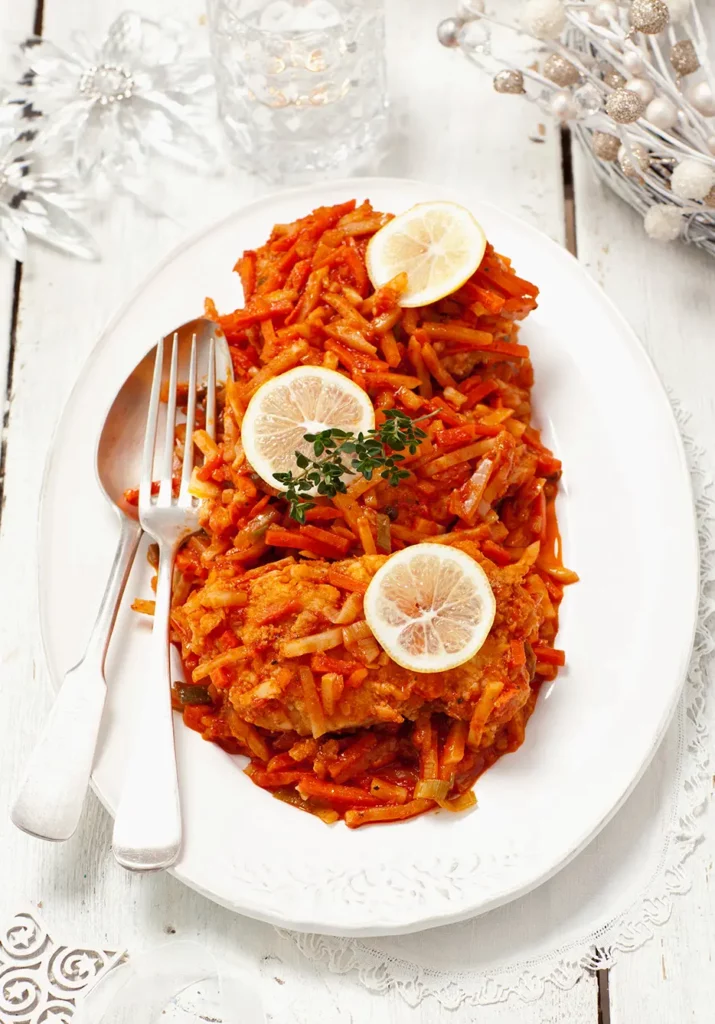
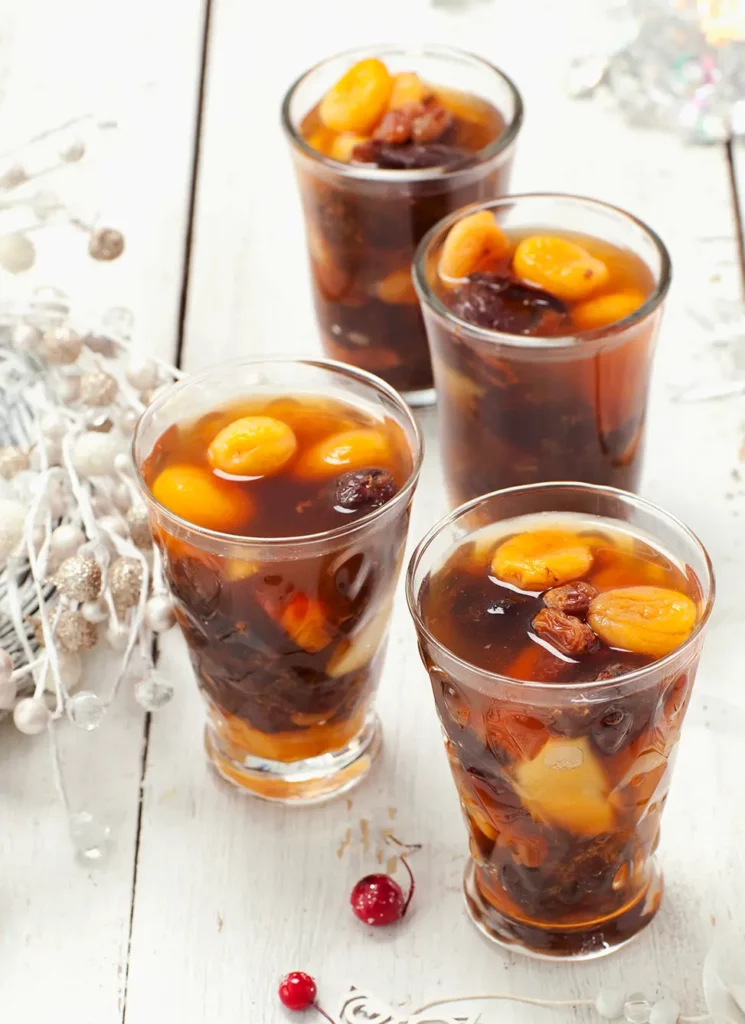
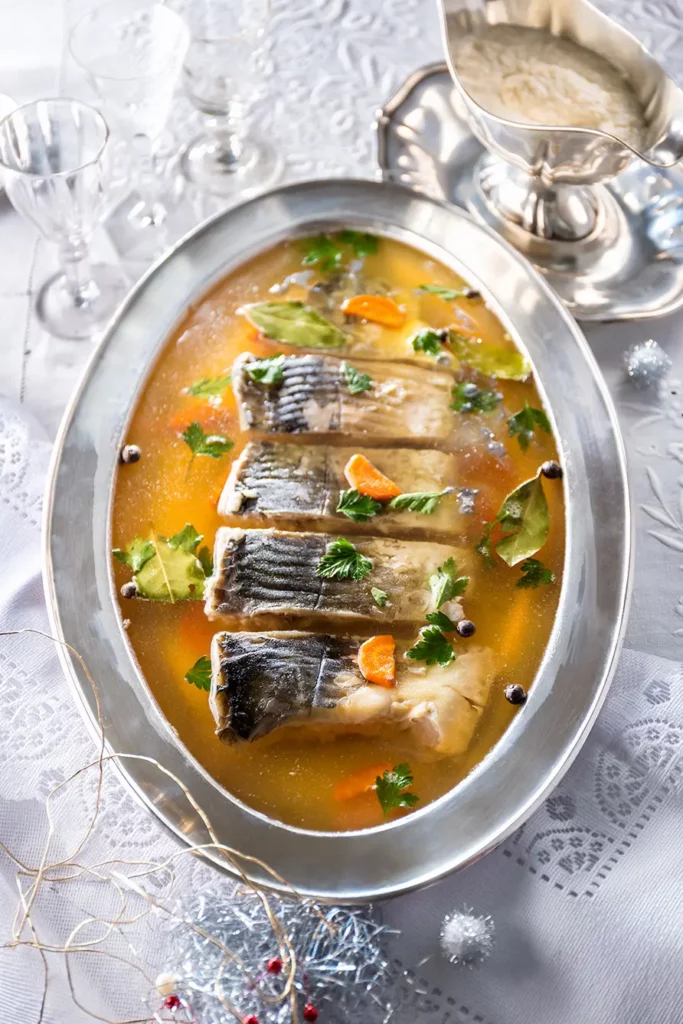
Boiled dishes can be prepared beforehand and require less attention during festivities. Moreover, as Christmas Eve day is spent in preparation for the evening, you don’t eat a lot before supper. That’s why the average calorie intake – the supper estimated at a rate of suggested daily intake of some 2000-2500 kcal – is not that harmful.
Not actually Christmas
These are the factors that lead to the conclusion that Polish Christmas Eve Supper is among the healthiest in Europe or perhaps even in the world. Moreover, the event is also usually dry, as Christians (or Christian-raised non-believers) observing the feast are encouraged to abstain from alcohol. And with almost 10 liters of pure alcohol per capita consumption in Poland, that counts as something.
(*As a side note: all the consumption indicators are from 2019. The trend is: less meat, more fish, and more alcohol.)
So, why is this Polish feast unlike any other? The reason may be surprising: it’s not technically a feast. What is it, then? An eve. As in the day before the actual feast. Although in Poland, you get a sense of Christmas culmination on the evening of December 24th, this tradition didn’t cancel the fact that the actual Christmas celebrations fall on the 25th and 26th.
Poles still go to work on Christmas Eve, and shops are open (and full), though they close early (there are legal restrictions, and the trend is toward making it a bank holiday.) It will never be free, though, as there are the house chores and a plethora of preparations, inclusive of setting up the table and cooking, sometimes also dressing of the Christmas tree.
Technically, Christmas Eve supper is a kind of a wake where we… wait for the first mass of Christmas Day to be said at midnight. In Catholic Church, this mass is called the Shepherds Mass (in Polish: pasterka) as the shepherds were the first to greet Baby Jesus, and now so are the Catholics.
This fast-before-feast tradition originated during the medieval period and is not limited to Poland or Central Europe. It is a form of spiritual (and, accidentally, also corporal) purification before the celebration. Call it a penance, if you will. As it turns out, even non-believers can occasionally benefit from it, as proven by the high ranking of the Polish Christmas Eve Supper.







